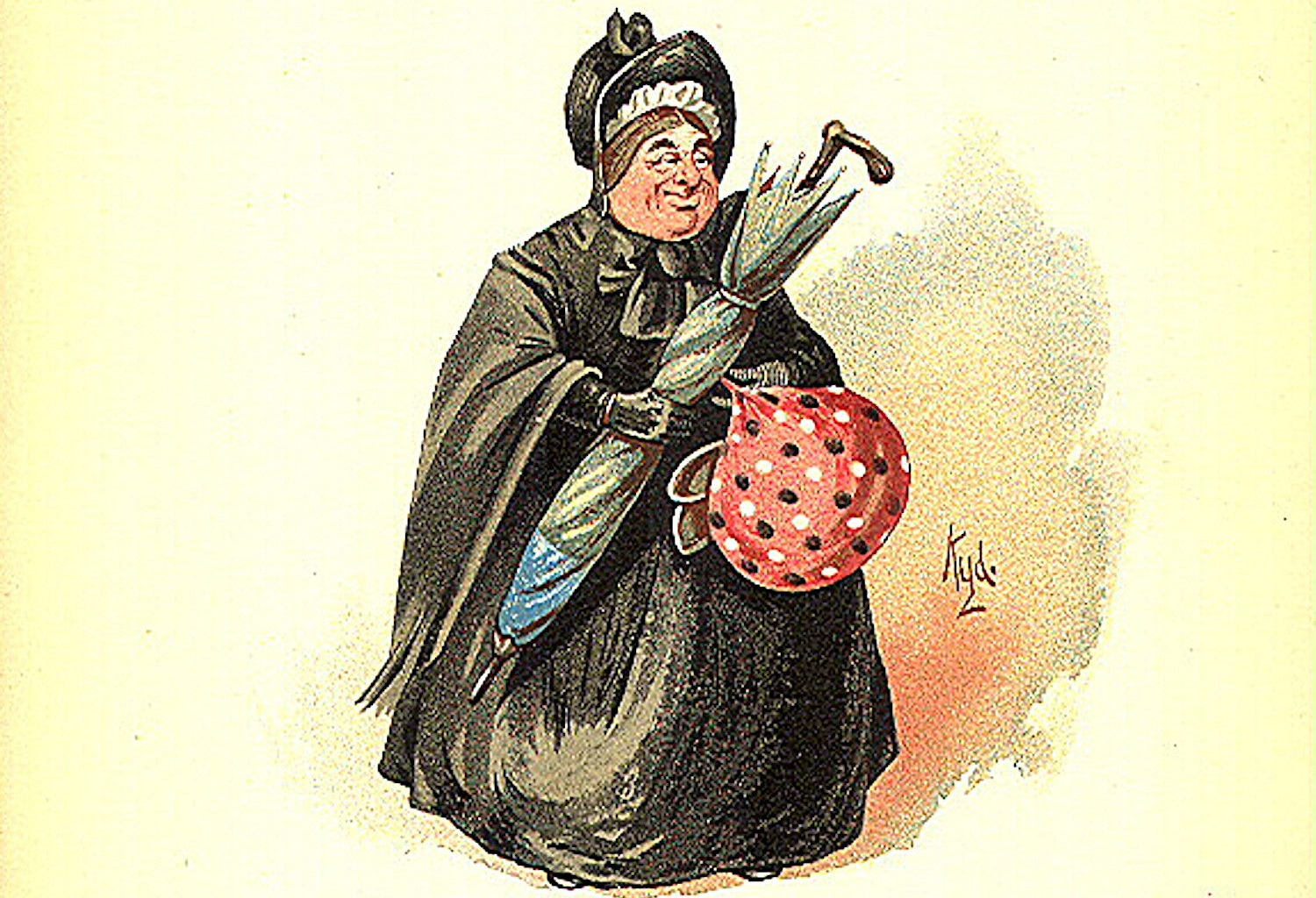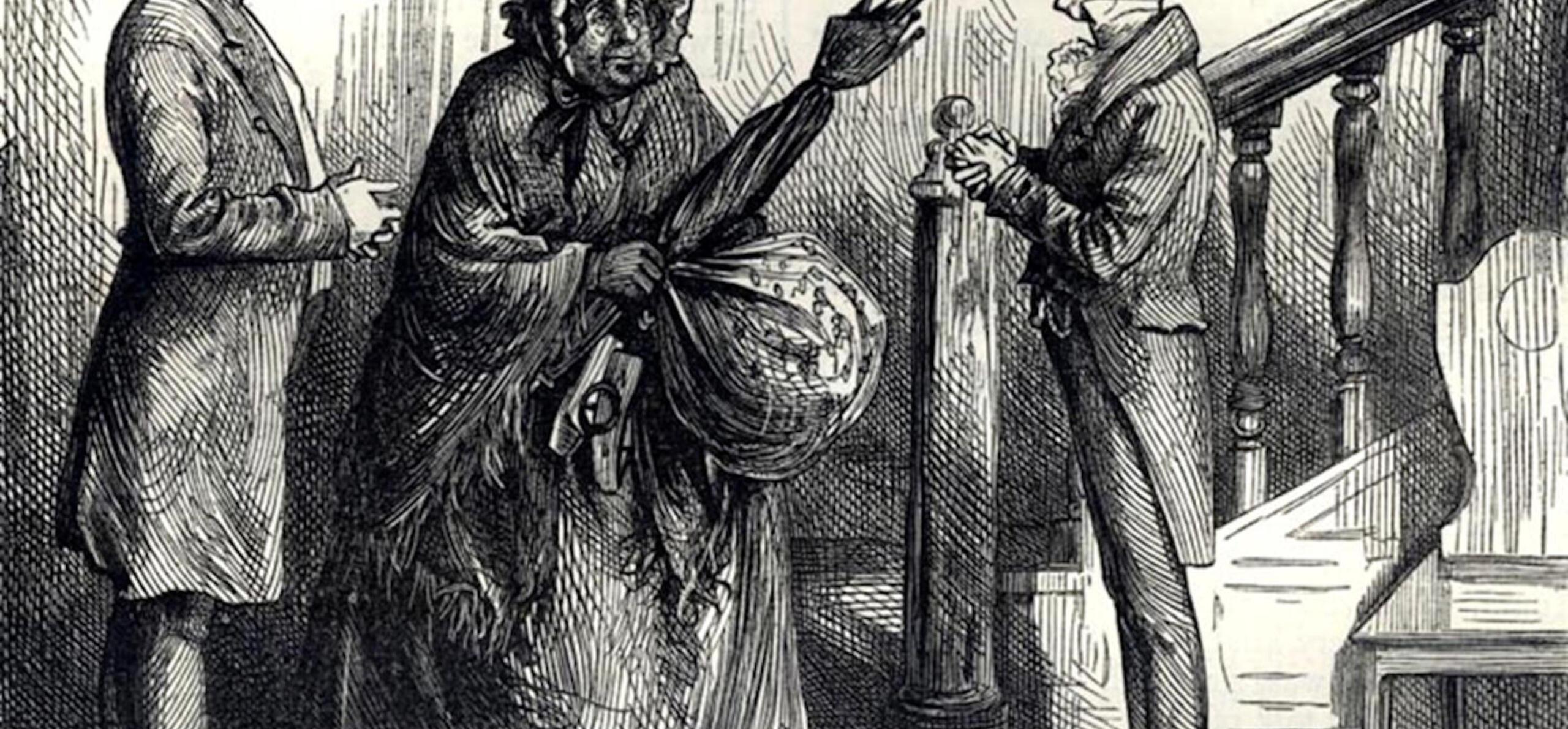From Sarah Gamp to Emergency Ward 10: Florence Nightingale and the birth of the nursing profession
A guest blog by Richard Havelock, Chairman, Berkshire Medical Heritage Centre. This complements Berkshire's Nightingales, our blog exploring 19th century nursing at the Royal Berkshire Hospital.
To those reaching adolescence in the late 1950s and early 60s, Carole Young, the glamorous nurse on the television soap opera Emergency Ward 10, may have left a lasting memory. The drama was credited by the British Medical Association with having eased public fears about being admitted to hospital, especially transforming the public's image of nurses.
In his novel, Martin Chuzzlewit, published in 1843, Charles Dickens described the popular image of a nurse at that time:
“The face of Mrs Gamp — the nose in particular — was somewhat red and swollen, and it was difficult to enjoy her society without becoming conscious of a smell of spirits. Like most persons who have attained to great eminence in their profession, she took to hers very kindly; insomuch that, setting aside her natural predilections as a woman, she went to a lying-in or a laying-out with equal zest and relish.”
The astonishing contrast between the dissolute Sarah Gamp and the kindly and efficient character of Staff Nurse (later Sister) Young conveys how dramatically the popular image of nurses changed, most radically the last half of the nineteenth century.

Sarah Gamp, Dicken's nurse in Martin Chuzzelwit by Kyd
Although Miss Florence Nightingale undeniably played a key role, contrary to popular myth she did not single-handedly invent modern nursing, and her influence was as great in encouraging public health reform. Her prominent social position as a member of the upper crust, with particularly prestigious connections, enabled her to bring disproportionate influence to bear on those walking the corridors of power, but her demonic drive and obdurate refusal to absorb developing scientific ideas led in due course to the erosion of her influence.
Her rapid projection into public prominence was precipitated by her role in leading a party of nurses which set out, soon after the outbreak of the Crimean War in 1854, for Scutari on the Black Sea, to improve the dire conditions in the makeshift hospital set up in a former barracks there. These, and the success of the mission, were most effectively publicised in the graphic reports sent from there by William Howard Russell, special correspondent of The Times of London, and a prominent pioneer of the crusading journalism that gave the newspaper the nickname of ‘The Thunderer’.
It was in one of these articles that the compelling and reassuring image of ‘The Lady with the Lamp’ first entered the public consciousness, where it has endured to this day, enshrined in a wealth of books, plays, films and other images. Florence Nightingale became a media star. After fading from the limelight as her influence waned from the 1870s, there was a renewed surge of interest in Miss Nightingale in 1907 when, transformed from the formidable, sparely-figured juggernaut, as when at the height of her powers, into a rotund, amiable but senile old lady, she was presented with the rare honour of the Order of Merit, although, in her declined mental state, hardly realising it.
Wars have always been catalysts for medical development, and the seeds of modern nursing were sown in the 13th century when, probably stimulated by the Crusades, there was a great expansion of monastic orders devoted to secular purposes, notable among which was one dedicated to St Francis and mainly concerned with nursing. Although this tradition continued in predominantly Catholic countries such as France, the Dissolution of the Monasteries in England in 1535 resulted in a lack of hospital accommodation for the sick, such that only ignorant and inexperienced women were available to staff them. In spite of a spate of new hospitals founded after 1700, the problem persisted beyond the mid-nineteenth century.
At the beginning of Queen Victoria’s reign, the advent of anaesthesia was still a few years away, and there was no understanding of infection control. Hospitals were grim, and permeated with the nauseating stink of illness and surgical infection - essentially for the poor since the more affluent would be treated at home. The patients were often filthy, teeming with vermin, and suffering from many diseases now rare, such as delirium tremens, typhus fever and the terminal stages of pulmonary TB.
It was not uncommon for them to be left untended. One man admitted in 1825 to St George’s Hospital in London with a cut on a leg died after five weeks in a filthy bed, unwashed throughout his sojourn there. In line with the domestic norm at the time, the sheets were changed only every three weeks. The same year, another man was admitted with a compound fracture of a leg which was then immobilised. He died after twelve weeks, when it was found that he and his bed, which was sprouting mushrooms, were alive with maggots. In 1833, a coal-heaver with a broken jaw was carried to Guy’s Hospital (many years before ambulances were introduced) and, ignored by the nurse on duty, was left unattended in the accident ward until the following day, twenty-three hours later, when a passing surgeon happened to notice him.
Treatment was often brutal. As surgical patients, having been strapped down on the operating table, began to writhe, students watching the spectacle would relieve the tension with hideous yells. Many, of more sensitive disposition, such as Charles Darwin and Thomas Huxley, were put off pursuing a medical career as a result. Things had hardly improved at the London Hospital by the early 1870s:
“The hospital was an anathema. The poor people hated it. They dreaded it. They looked upon it primarily as a place where people died…. They feared an operation, and with good cause, for an operation then was a very dubious matter…..
Treatment was very rough. The surgeon was rough. He had inherited that attitude from the days when operations were carried out without anaesthetics, and when we would need to be rough, strong and quick, as well as very indifferent to pain…… It had to be submitted to….. Quite medieval methods were still observed.”
No respectable woman would consider working in such conditions. The position of hospital matrons was similar to housekeepers in country houses, and their responsibility extended to all domestic services including catering. Nurses, also under her authority, were regarded as a lowly grade of domestic servant, akin to a scullery maid. In consistency with their working environment, many were callous and unreliable, unable to read or write, and able to perform only the simplest tasks. Their working hours were long, 6am to 10pm, and the workload heavy, typically with only one nurse responsible for a ward of about seventeen patients. Pay in the 1830s was typically about £18 a year (equivalent to about £1,500 now) plus board, and tipping was common until the 1870s.
Because of the virtual absence of any scientifically based treatment, reliance was placed on a ’supporting regime’ in which alcohol featured prominently, exposing the nurses, providing what comfort they could, to temptations that they were evidently unable to resist. The best of them deserted the hospitals for private work in affluent households, for which the going rate in the 1850s was about 5 guineas a week (about £500 now). For the doctors, an honorary hospital post was simply an embellishment to enhance the private practice from which many drew lucrative incomes. It was not in their interest for nurses to be better trained and so present competition.
Things stated to change from the 1840s, and Florence Nightingale’s work was certainly an important contributory factor, but through, for example, her failure to accept the developing germ theory of infection, opposition to the registration of nurses, and adherence to religious orthodoxy as an essential element in nursing, her influence was not an unmixed blessing, and declined from the 1870s.
One distinguished medical historian has written, with regard to the revolution in nursing:
“ The legend that this reform was accomplished by Florence Nightingale is so widely accepted that there is little real hope of altering the traditional story. Yet she would have been the first to deny the truth of the legend.”
Nevertheless, legend has its value in supporting traditions which bring us together, but it is important to maintain critical scrutiny and striving for truth, which, though inevitably more complicated, is usually more interesting and instructive.
Further reading
You can discover more about how nursing developed in Reading at the Royal Berkshire Hospital in our Berkshire's Nightingale's blog.
Royal Berkshire Medical Museum
You can discover more about health and medicine in Berkshire's history at the Royal Berkshire Medical Museum located in the hospital's old laundry building. See their website for opening hours and other events.





